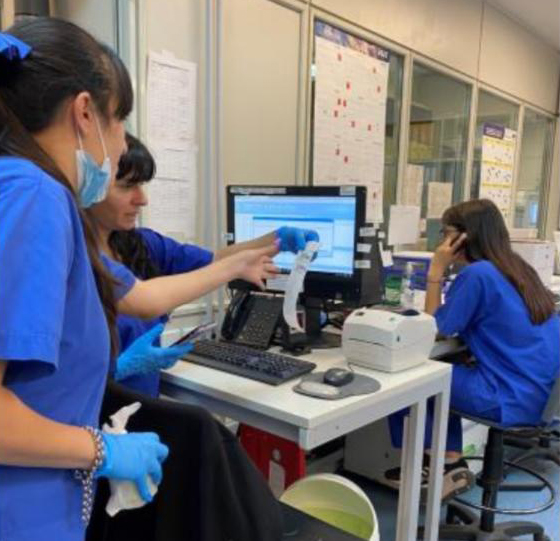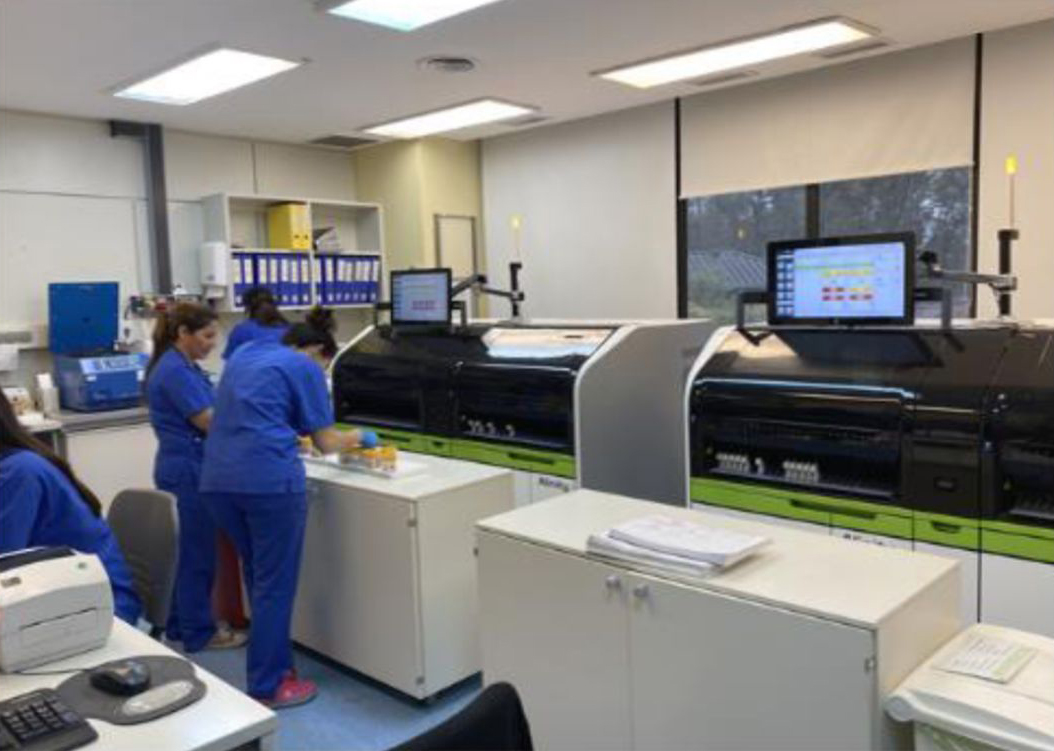Optimization of the blood collection process at medical labs: Process efficiency as climate action
Hospital Universitario Austral, Argentina
Case study summary
The hospital blood collection process was completely restructured at medical laboratories. This included updating technology, which is more efficient in terms of energy consumption and blood volume needed. The process went from using one blood tube for each area to using only one for all lab areas. Besides improving the quality of patient service, this update resulted in 900 kg of biomedical waste avoided per year, which in turn avoids the release of more than 15,200 kg CO2e a year. (1)
Demographic information
- City: Derqui
- State/province/region: Buenos Aires
- Country: Argentina
- Type of institution: private, nonprofit
- Number of full-time staff: 3,100
- Number of part-time staff: 500
- Patient population served per year: >1,000,000
- 130,000 patients treated per year (including outpatients and patients admitted)
- Geographic area served: District of Pilar and surrounding areas, although it also provides services to patients from all over the country and abroad.
- Top health equity issues (1-3) that affect the population served: The hospital provides services mainly to people with health coverage, but also to a population with no resources that has access to care through governments and national and international foundations, especially for complex pathologies. We also reach out to patients in vulnerable areas near the hospital through the health station and in the rest of the country through our health travels.
- Number of beds: 221

The issue
The primary need was to update some of the lab technologies that were reaching the end of their useful life, which provided the opportunity to review all processes to improve staff well-being and patient experience. This led to the evaluation of process efficiency and possibilities for improvement.
The intervention allowed opportunities to use resources more efficiently, update technology, improve staff and patient experience, optimize times, reduce the number of single-use plastics, and cut down GHG emissions.

Thinking about processes and applying improvement processes allows us to work throughout the institution; it’s very interesting seeing how by changing the way we do things we can positively impact planetary health. It's exciting to see how more and more processes consolidate in this race to zero.
Hospital goals
- To reduce energy consumption and greenhouse gas emissions
- To increase working capacity
- To improve staff working conditions
- To improve patient experience
- To reduce waste from blood tubes
Sustainability strategy implemented
The strategy comprised the whole blood collection process at the medical labs, from the reception of the patient to the disposal of waste resulting from the sample collection. This involved a technology update, making the process more efficient in both energy consumption and blood volume needed. The process went from using one blood tube for each area to using only one for all lab areas.
The process and results were discussed at team meetings with participants involved. At the same time, we worked with staff to develop a culture of sustainability. The results were first shared with management and lab staff and later with the rest of the hospital.

Implementation process
The strategy was led by the head of the laboratory, who planned the process with his team based on the need to reduce the institutional carbon footprint and address the energy and waste management challenges the hospital was facing. The decision to have the laboratory lead the process was supported by management.
The strategy was designed in a holistic manner, involving every step of the laboratory process. Minor changes were required in different areas to support connecting staff rather than dividing the process into sections. This called for a change in layout without the need for major construction, since it only reconfigured the blood and tube flow through the lab.
Equipment is located in a central processing core. Blood serums and samples are sent there to consolidate the different tests in one tube. To this end, tests were sequentially migrated by group and technical affinity, with the current level of consolidation nearly complete. The process was addressed as an improvement cycle and implemented in less than a year. It is currently in its final implementation stage.

Tracking progress
Some of the metrics used were:
- Carbon footprint (emissions avoided) and amount of energy saved
- Collection tubes purchase volume
- Amount of biomedical waste generated in the laboratory
Progress achieved
Currently, 90% of the process has been implemented, and only final adjustments are pending in order to gather definite numbers and assess results. So far, the hospital has been able to save 100,000 tubes a year, representing approximately USD 12,000/year in disposable material costs; 1 ton of biomedical waste; and USD 1,200 for the disposal of that waste, at 2023 values. Also, the average number of collection tubes used per patient has been reduced from five to two (three in some cases), and there was a 52% reduction in heat generation (7,680 BTU vs 3,639 BTU) as a result of new equipment.
In summary, the hospital buys fewer plastic disposable items, less blood is drawn from patients, plastic waste (with blood) is 1 ton less, and more efficient technology is available. Additionally, the shortened blood collection process improves patient experience and benefits staff by reducing the number of samples to be processed.

The starting point was a highly fragmented process. We had 5 pieces of equipment to cover 70% of lab demand, which was distributed into different sections, leading to the fragmentation of the pre-analytical (sample collection) stage with individual requirements for each area. This process was deconstructed with a technology update that allowed us to increase hospital capacity and productivity, and have a more efficient decision-making process. This translated into a significant reduction in the number of tubes we use per patient. There are plenty of benefits and associated impacts. This intervention has streamlined the pre-analytical stage, and facilitated both sample handling and distribution, and response time. Although implementation is still in progress, we estimate a total annual savings of 100,000 tubes, representing a reduction of 900 kg in biomedical waste and its associated costs.
Challenges and lessons learned
All hospital processes, including those that are deeply rooted, need to be reviewed and rethought in a systemic manner, from technology purchases to the amount of waste generated by providing care.
Next steps
The hospital will continue reviewing laboratory processes in order to improve patient experience and will replicate this review in other diagnosis and treatment areas.
Footnote
- Estimate calculated with HCWH Climate Impact Checkup tool, considering the emissions associated to the manufacturing and distribution of waste avoided, through the Extra supply chain section (12054 kg CO2e corresponding to spending in the Pharmaceuticals category), and the emissions associated to final disposal (3192 kg CO2e of common waste disposed of in landfills).